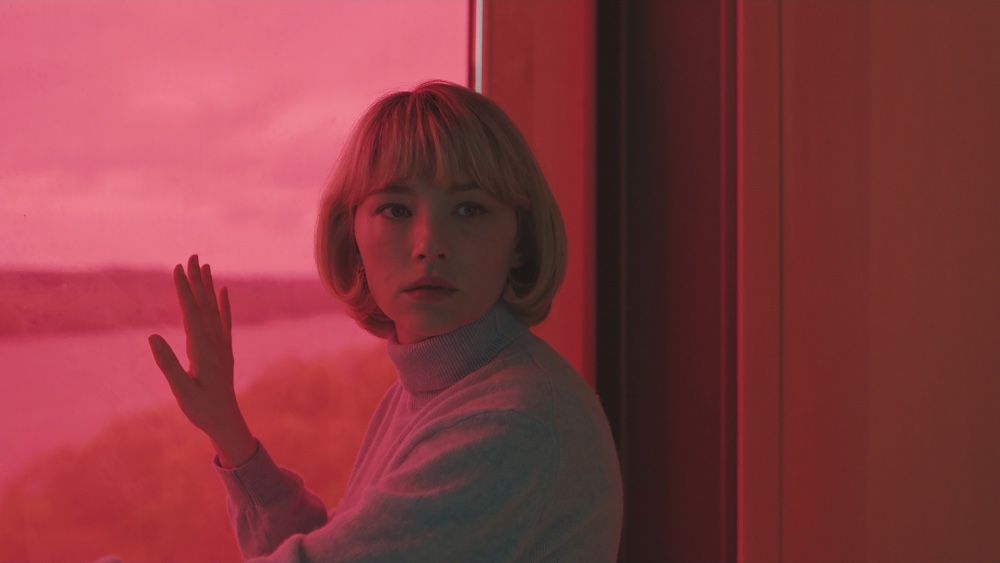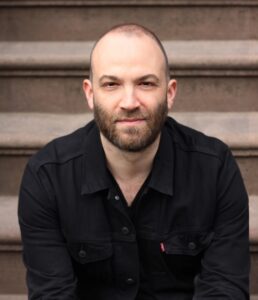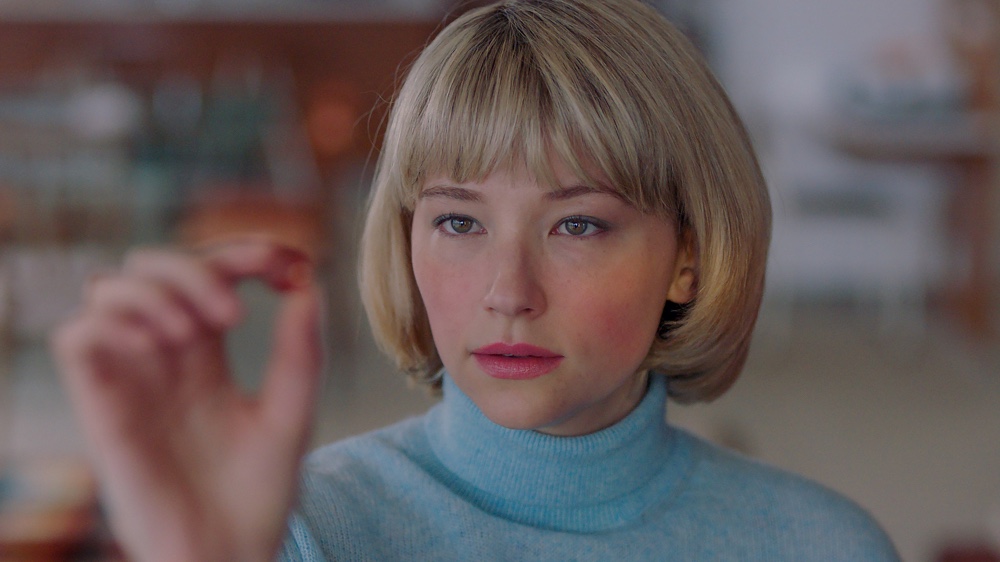
Below the Line likes to shine the spotlight on some of the fresher new voices coming from the independent film space, as is the case with composer Nathan Halpern, who has done some amazing work over the past ten years or so.
Halpern scored Chloé Zhao’s second film, The Rider, in 2017, and Bing Liu’s doc Minding the Gap a year later – both films receiving a number of accolades and awards nominations when they were released. Halpern was also nominated for an Emmy for his sonic role in the 2016 mini-series Soundbreaking: Stories from the Cutting Edge of Recorded Music.
Halpern also scored Nanfu Wang’s first three movies – Hooligan Sparrow, I Am Another You and One Child Nation – and her upcoming HBO doc, In the Same Breath, about the outbreak of COVID-19 in China. That movie, like many others Halpern has scored, premiered at the Sundance Film Festival just a few months back.
Although Halpern has worked a lot in the documentary music space, he also scored Carlo Mirabella-Davis’ Swallow, starring Haley Bennett, which premiered at the Tribeca Film Festival in 2019 and was released by IFC Films last year. It’s a dark dramatic thriller in which Bennett plays a newly-married woman who takes to swallowing random objects in order to escape her humdrum lifestyle as a housewife.
Halpern is still fairly young and enthusiastic about film scoring, but he’s also someone who has a great handle on how his craft works. Below the Line had a lively conversation with the composer over Zoom a few weeks back.

“My way into composing was kind of circuitous in a lot of ways,” he told us when asked about his background. “I didn’t come to film music until a little bit later. I was playing in bands in New York City, and at the same time, from a pretty young age, film was something I was very passionate about and spent a lot of time with. Certainly, as a bored teenager in the suburbs, what I spent most of my time doing was recording music, playing with the 4-track, and then watching lots of weird movies. Those were my two main artistic interests. I never thought about composing film music, but I would have a lot of experiences of being very inspired, artistically, musically, from watching a film and would watch a film, even as a teenager, and go and write record a bunch of music that was sort of inspired by that experience. At the time, my interest in that was not career-minded at all, it was really artistic, it was personal, to learn and understand the world, but I did get a lot of artistic inspiration out of that.”
“It’s not something I studied formally,” Halpern said about his musical education, “But I think that a lot of my thoughts and precepts come from watching a lot of film and having a sense of dramatic theory.”
Eventually, our discussion turned to Swallow and Halpern’s distinctive take on nostalgic genre film scoring. “I was connected to Carlo through Mollye Asher, the producer with whom I worked on the film, The Rider, and also the music supervisor, Joe Rudge — I’d also worked with him on Goldie and some other films,” he said. “They were both working on [Swallow], and they connected me with Carlo — they thought it could be a good fit. Molly had sent me the script, which I loved, and then I started talking with Carlo, and we really hit it off, we really connected. In a lot of ways, it was a type of film that I had always really dreamed of doing that had such a sort of spiritual, cinematic connection to so many of the things that I really just grew up with and just adored. Carlo’s tastes and his interests in life — Cronenberg films, films like Rosemary’s Baby, and more kind of stylized stuff. It was the kind of film that people were not making at this time, so it was a very new, kind of thing to do at this time to kind of tap into some of these traditions, so I was very excited by that.”
“Definitely, early on, there was this idea that the film was going to have this stylized arc,” Halpern said. “At the beginning of the film, talking with Carlo and the producers, Mollye Asher and Mynette Louie, there was definitely an interest in tapping into something that had this mid-century old Hollywood kind of esthetic with regard to the domestic melodrama aspect that we invoked earlier in the film, and then later to the more genre, psychological thriller aspect, this more kind of like Hitchcockian De Palma feel that we’re going to get into. That was definitely something that was always discussed.
“Then the question was, ‘How exactly are we going to do that in a way that’s going to be compelling?’” he embellished. “The other part of the mandate was that this is not just going to be some sort of retro pastiche kind of thing. There is something about the film that is very earnest and very heartfelt, and you’re going to use these more stylized devices, but it’s going to have to be very sincere and very authentic, and you’re going to use these heightened things to take us into emotions and into a subjectivity that might otherwise be harder to access.”

Halpern took us through one particularly tense scene in Swallow that really sets up the tone for the rest of the film. “There’s a scene in the film where she’s attempting to swallow the thumbtack. There’s this very beautiful cinematography by Kate Arizmendi that has become more heightened, beautiful, lush, Erin Magill has this beautiful set design in this room. It very much has this kind of ‘50s-‘60s housewife aesthetic going — this is not a purely naturalistic thing. We’re being taken into this more stylized world a little bit. When she’s tempted to swallow the thumbtack, Carlo shared a lot of the language with me that he shared with Haley when he was directing her in the scene. A lot of it was this idea of this isn’t just a dark scary horrible thing that someone’s swallowing a thumbtack; there is this element of the sensual and the seductive. He and Haley talked about it like a love scene. It’s like this dark romance he called it, there’s allure. If you see someone going to swallow a thumb tack, what the hell are they thinking. There’s a sort of darkness in the chord progression, but we did have this idea of there is something romantic about this or it’s dark, but it’s also alluring, and how do you sort of bring that out? So the strings become very lush, and there’s the sort of fluttering harp sounds. There’s piano stuff that’s very delicate and sort of gentle and high. It both has this sort of dark relentlessness, but it’s meant to sort of invoke the sort of seductiveness of the alluring.”
“That’s the kind of thing where you’re using something that might seem otherwise counter-intuitive if you were just looking at those images,” Halpern continues. “Working with the director and understanding the psychology of the character, we’re able to do something like that and at least for us we feel like this is truthful, and authentic. We’re being a little more heightened about it, visually, with the music, everything else but we’re also doing something that’s honest and that’s not misleading.”
“When people, myself included, complain about film music, what they will often say is the idea of it being manipulative, or you’re being told how to feel,” Halpern elaborates on why it was important to never go full-on Bernard Hermann for Swallow. “That’s usually the thing that really makes people crazy, and I think that applies to a more heightened film like this. My feeling is that the underlying truth in that people say that what they what they are meaning beneath the surface is the music, you want it to be dialing into and dialing up something that is authentically there that you might otherwise not be fully kind of getting, or that you might otherwise miss. If it is not the composer’s outside commentary, or the director’s outside commentary, if it feels truthful, to the psychology of the protagonist, to the truth of the moment, then instinctively, we as the audience will feel like, ‘Yes, this feels right. And we’re going along with this. Even if it’s something that’s a little crazier or more heightened.’”

Our conversation then turned to Halpern’s long-time working relationship with Nanfu Wang, particularly her latest about the COVID-19 outbreak, In the Same Breath. “For this film, I was looking at a rough cut of the film, when I first composed the first pieces of music for it,” he ruminated. “We had a conversation about the film, so we started a little bit earlier, maybe, than we sometimes have in the past. I was not working with a locked cut. Nanfu expressed that stylistically this was, in many respects, a little bit different from some of her other films. We discussed the idea that we could use the score in a different way and use it to speak to something that was a bit more apocalyptic, and more heightened, and bring out some of the sort of intrinsic, defamiliarized, strange, horrific sort of nature of what was happening in an even more expressive way than we might have done for some of her other projects. That was something we talked about early on.”
“The first thing that I did in this case was the very first cue from the movie when we see the balloons and all that stuff going up into the air,” Halpern continued. “We talked about using music in this sort of defamiliarized way, and in some ways, evoke this unrelenting virus sort of floating out. We’re going to use the music to show something that we’re not actually seeing on screen, because no one knows what’s happening. The virus is there, it’s floating around, it’s descending, but nobody knows it, right? I had these icy slabs of weird sort of analog synth and then these distorted kind of fluttery sounds that are evoking the bubbling of the virus bubbles. That was something that I talked about even specifically with that scene, with Nanfu and her Co-Editor Michael Shade. He and she even talked about the balloons being evocative of these COVID virus droplets, so that was the first thing I did.”
An ongoing discussion we’ve had with composers as of late is how they work with directors who may or may not be particularly musically-inclined, and we continued that thread. “I’ve worked with the occasional director, who’s very musical. There was a documentary director I worked with once who was a conservatory-trained composer and had tremendous musical knowledge,” Halpern told us. “I think that for some directors, they will be a bit concerned about music. If they feel that they don’t have technical musical knowledge, they’ll be concerned that they’re not quite sure what to say or how to communicate. I always feel like it’s very important to make sure that any director you’re working with feels totally empowered. The point is, they don’t have to know anything about music, per-se. What they do need to know and what they can do, and what you can explore and discover together is the underlying heart of the matter, like what the film is supposed to feel like and the psychology of the character at that moment. Those are the things that for me as a composer, that’s what drives me into the creative process. It’s like having that inspiration of the meaning of the scene, where the meaning of the film or the vibe we’re going for. If I know that and I’m worth and we’re on the same page on that, then the music flows very intuitively from that.”
As with many composers these days, Halpern is deeply involved with creating the very sound of his scores, saying it’s important “having a bit of that production mindset, where the sound of the music is such an important part of it for film scoring,” he elaborated, “I think certainly in a film score, you don’t necessarily know it right when you’re starting, but finding, ‘Okay, this is the vibe, this is the sonic palette that’s going to feel appropriate for this. These are the kinds of things we’re going to avoid, that really do not belong, or even like these are the things that might seem obvious for this kind of film score, so we’re definitely not going to touch any of them.’”
“It is important as a composer now to really empower yourself to get that stuff going at your fingertips and have a real facility with the sonic and production part of it. That’s so crucial,” he concluded.
Swallow can be watched on Hulu, and Halpern’s Original Motion Picture Soundtrack is available on vinyl. In the Same Breath will be on HBO later this year.





